Sugar cane was one of the best known land uses in Queensland (QLD) for many decades, but it seems that the crop is being displaced in the southern end of the state due to lack of profitability.
During the Irish Tillage and Land Use Society (ITLUS) tour in January 2020, we met a number of farmers in QLD who were growing alternatives to cane.
Marco Farms in QLD is the biggest watermelon grower in the state and possibly in Australia.
Keith Martens explained that his farming business is between 1,500 and 1,800 acres, with the variation being due to the amount of land rented annually.

Keith Martens of Marto Farms explains the basics of watermelon production.
The crop is part of a more intensive rotation on the farm that was used to displace sugar cane, a traditional crop in the area.
Watermelon plants are planted about 1.6 metres apart as modules, with a male pollinator in between the females.
The male plants have no value as a melon. This is a fast growing crop - in and out of the ground in a very short period.
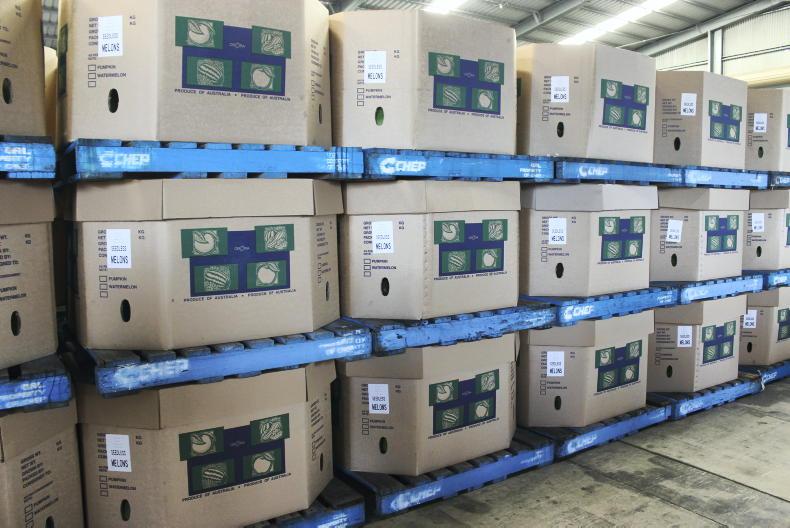
Watermelons boxed and ready to be transported throughout the country.
Yields are normally around 20t/ac and they harvest 1,000t to 1,200t/week normally.
Harvested melons are picked into cardboard boxes and then graded directly from the field.
Much of the crop is moved from the grading lines directly for distribution, but it can be stored using refrigeration for up to 20 days.
Water and labour intensive
True to its name, the availability of water governs all decisions regarding this crop.
When we visited in January 2020, their water allocation was only about two-thirds of their requirement, so if rain amounts are not adequate, the lack of water will impact on yield and output.
But once we arrived, water flowed freely as the skies opened up following a prolonged drought.
A watermelon can weigh between 10kg and 13kg at harvest
Not surprisingly, watermelon is a labour-intensive crop, as are so many high value crops.
A watermelon can weigh between 10kg and 13kg at harvest and harvesting is a manual operation.
Keith said that they employ very few locals or backpackers for harvesting, but they do have access to Pacific Islanders who have come back for the harvest for many years now.
He commented that his preference is for Samoans for the watermelon harvest because the people are strongly built and not too tall.
Individuals can earn up to AUS$1,000 per week during the peak harvest season. And, as with everywhere in Australia, public holiday pay is 2.5 times normal rates.
Harvesting activity is normally based on six days per week, weather-permitting.
Rotation is important and annual rental is part of the business. Keith said that he was paying AUS$500/ac to $800/ac for access to land for less than a year to grow watermelons.
Barefoot and prickly
Pineapples seemed like one of the toughest crops we encountered during our tour. Mario and Gordon Oakes farm pineapples as an alternative to sugar cane.
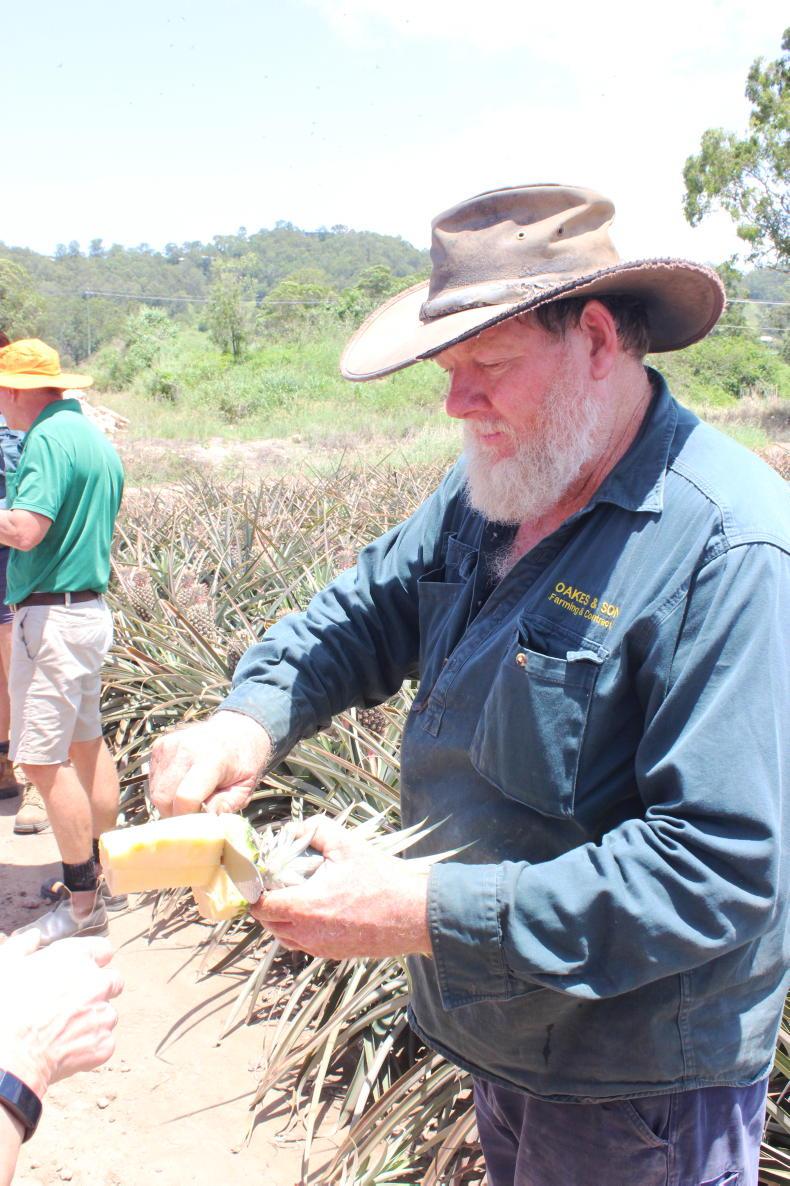
Gordon Oakes slicing and dicing a pineapple for general consumption.
On the day we visited with them in late January 2020, there was a crew harvesting. The day was hot and Gordon was moving through the crop bare-legged in his feet.
The crew that was harvesting had to walk among the plants to harvest the pineapples, which grow in the centre of the bushes.
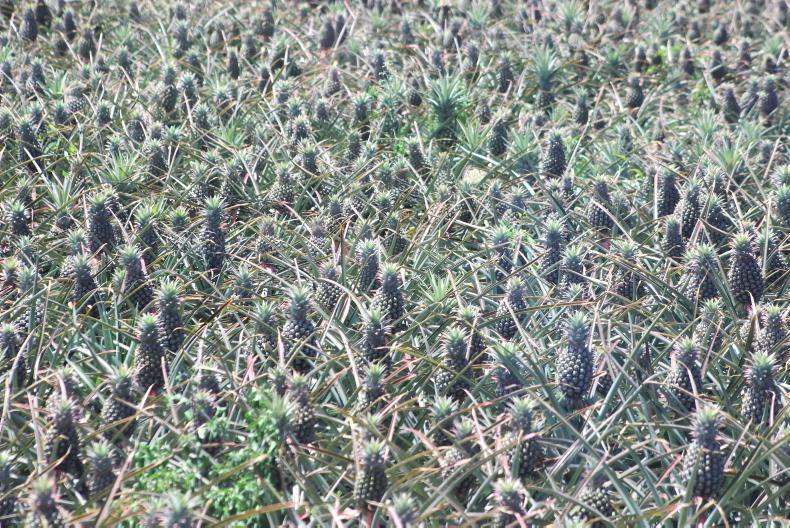
A crop of pineapples which are sown in rows and grown from plant cuttings.
The bushes are tough and have pointy leaves that necessitated wearing heavy trousers for most mortals and then the heat.
But neither seemed to worry Gordon.
Commercial pineapples are grown from short bushy plants which produce one and possibly a second pineapple growing in the centre of the bush.
The bushes are short (about 5cm to 60cm tall) and the pineapples are formed at the top of the centre stem.
The crop
The crop is planted from bits of vegetation taken from the tops or slips of existing plants.
Harvesting then takes place after about 18 months and the crop is finished after about two years. It is then ripped up and replanted.

A box of recently harvested topped pineapples leaving the field and destined for the canning market.
The business grows about 250 acres of pineapples out of 1,000 acres farmed.
In that area, they normally get about 1,500mm of rain per annum, but it was very dry when we were there.
The lack of rain affected quality and the pineapples produced, which were small and sweet and only suitable for canning at a much lower price.
Water is very important to grow the crop, but it is also an enemy. Because much of the ground is bare, soil erosion is a major concern.
So is foliar disease, where phytophthora is a major concern. And there is also an insect pest that can attack the pineapples and hit their value.
Fertiliser is applied every two weeks and other inputs are applied in between
All inputs are applied as foliar sprayers and the crop is sprayed about 30 times in the season.
Fertiliser is applied every two weeks and other inputs are applied in between. They must spray for weeds and disease.
Spraying is done at 3,000l to 4,000l/ha and all spraying was done using an offset boom (the boom was located on one side of the sprayer only).
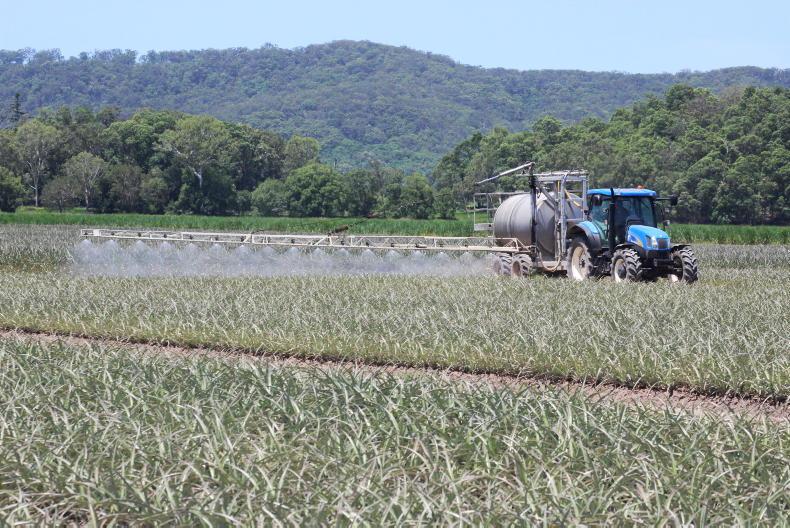
All the spraying of the pineapples is done at 3,000 to 4,000 litres per hectare with an offset boom. The volume of liquid can be seen to have wet the crop behind the boom.
Planting is phased and staggered to provide a spread of harvest. Harvest can take place from January through to November and they would aim to pick 30,000 plants per week.
These would normally go to the fresh market but that did not happen in 2020 because of the impact of the drought.
The value of the pineapples for canning was about AUS$450 to $500/t ($288 to €320/t), while fresh market price is approximately $800 (€512) per tonne.
The crop will always have a mix of good years and bad years and it does not like stress from any source. Gordon suggested that good and bad years are about half and half.
Sugar cane was one of the best known land uses in Queensland (QLD) for many decades, but it seems that the crop is being displaced in the southern end of the state due to lack of profitability.
During the Irish Tillage and Land Use Society (ITLUS) tour in January 2020, we met a number of farmers in QLD who were growing alternatives to cane.
Marco Farms in QLD is the biggest watermelon grower in the state and possibly in Australia.
Keith Martens explained that his farming business is between 1,500 and 1,800 acres, with the variation being due to the amount of land rented annually.

Keith Martens of Marto Farms explains the basics of watermelon production.
The crop is part of a more intensive rotation on the farm that was used to displace sugar cane, a traditional crop in the area.
Watermelon plants are planted about 1.6 metres apart as modules, with a male pollinator in between the females.
The male plants have no value as a melon. This is a fast growing crop - in and out of the ground in a very short period.

Watermelons boxed and ready to be transported throughout the country.
Yields are normally around 20t/ac and they harvest 1,000t to 1,200t/week normally.
Harvested melons are picked into cardboard boxes and then graded directly from the field.
Much of the crop is moved from the grading lines directly for distribution, but it can be stored using refrigeration for up to 20 days.
Water and labour intensive
True to its name, the availability of water governs all decisions regarding this crop.
When we visited in January 2020, their water allocation was only about two-thirds of their requirement, so if rain amounts are not adequate, the lack of water will impact on yield and output.
But once we arrived, water flowed freely as the skies opened up following a prolonged drought.
A watermelon can weigh between 10kg and 13kg at harvest
Not surprisingly, watermelon is a labour-intensive crop, as are so many high value crops.
A watermelon can weigh between 10kg and 13kg at harvest and harvesting is a manual operation.
Keith said that they employ very few locals or backpackers for harvesting, but they do have access to Pacific Islanders who have come back for the harvest for many years now.
He commented that his preference is for Samoans for the watermelon harvest because the people are strongly built and not too tall.
Individuals can earn up to AUS$1,000 per week during the peak harvest season. And, as with everywhere in Australia, public holiday pay is 2.5 times normal rates.
Harvesting activity is normally based on six days per week, weather-permitting.
Rotation is important and annual rental is part of the business. Keith said that he was paying AUS$500/ac to $800/ac for access to land for less than a year to grow watermelons.
Barefoot and prickly
Pineapples seemed like one of the toughest crops we encountered during our tour. Mario and Gordon Oakes farm pineapples as an alternative to sugar cane.

Gordon Oakes slicing and dicing a pineapple for general consumption.
On the day we visited with them in late January 2020, there was a crew harvesting. The day was hot and Gordon was moving through the crop bare-legged in his feet.
The crew that was harvesting had to walk among the plants to harvest the pineapples, which grow in the centre of the bushes.

A crop of pineapples which are sown in rows and grown from plant cuttings.
The bushes are tough and have pointy leaves that necessitated wearing heavy trousers for most mortals and then the heat.
But neither seemed to worry Gordon.
Commercial pineapples are grown from short bushy plants which produce one and possibly a second pineapple growing in the centre of the bush.
The bushes are short (about 5cm to 60cm tall) and the pineapples are formed at the top of the centre stem.
The crop
The crop is planted from bits of vegetation taken from the tops or slips of existing plants.
Harvesting then takes place after about 18 months and the crop is finished after about two years. It is then ripped up and replanted.

A box of recently harvested topped pineapples leaving the field and destined for the canning market.
The business grows about 250 acres of pineapples out of 1,000 acres farmed.
In that area, they normally get about 1,500mm of rain per annum, but it was very dry when we were there.
The lack of rain affected quality and the pineapples produced, which were small and sweet and only suitable for canning at a much lower price.
Water is very important to grow the crop, but it is also an enemy. Because much of the ground is bare, soil erosion is a major concern.
So is foliar disease, where phytophthora is a major concern. And there is also an insect pest that can attack the pineapples and hit their value.
Fertiliser is applied every two weeks and other inputs are applied in between
All inputs are applied as foliar sprayers and the crop is sprayed about 30 times in the season.
Fertiliser is applied every two weeks and other inputs are applied in between. They must spray for weeds and disease.
Spraying is done at 3,000l to 4,000l/ha and all spraying was done using an offset boom (the boom was located on one side of the sprayer only).

All the spraying of the pineapples is done at 3,000 to 4,000 litres per hectare with an offset boom. The volume of liquid can be seen to have wet the crop behind the boom.
Planting is phased and staggered to provide a spread of harvest. Harvest can take place from January through to November and they would aim to pick 30,000 plants per week.
These would normally go to the fresh market but that did not happen in 2020 because of the impact of the drought.
The value of the pineapples for canning was about AUS$450 to $500/t ($288 to €320/t), while fresh market price is approximately $800 (€512) per tonne.
The crop will always have a mix of good years and bad years and it does not like stress from any source. Gordon suggested that good and bad years are about half and half.










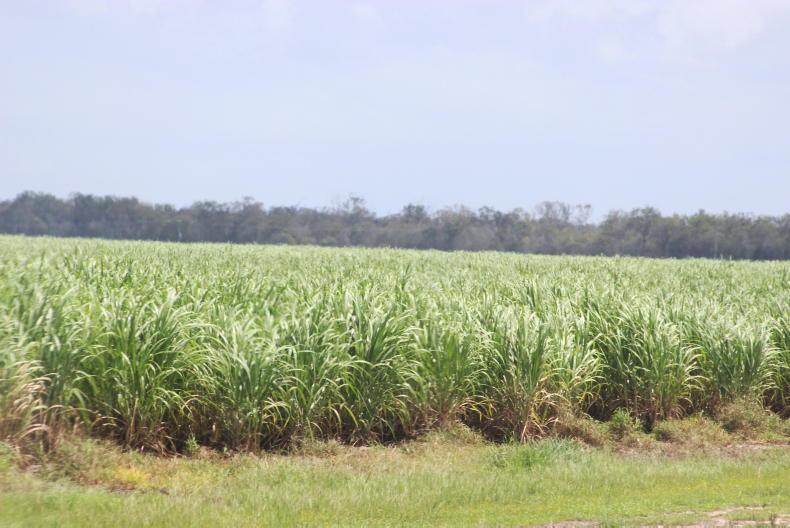
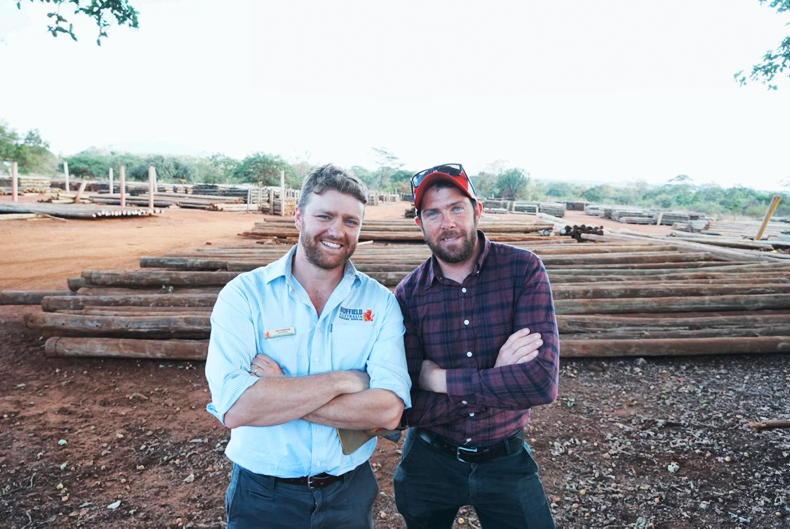

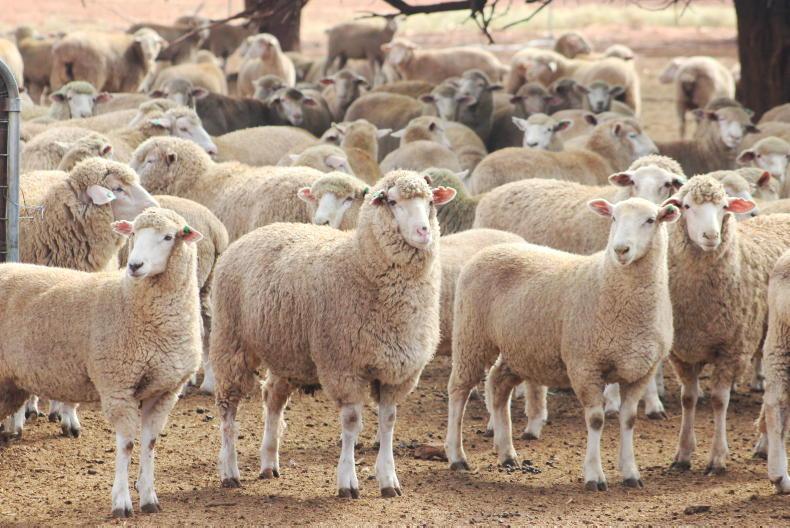


SHARING OPTIONS